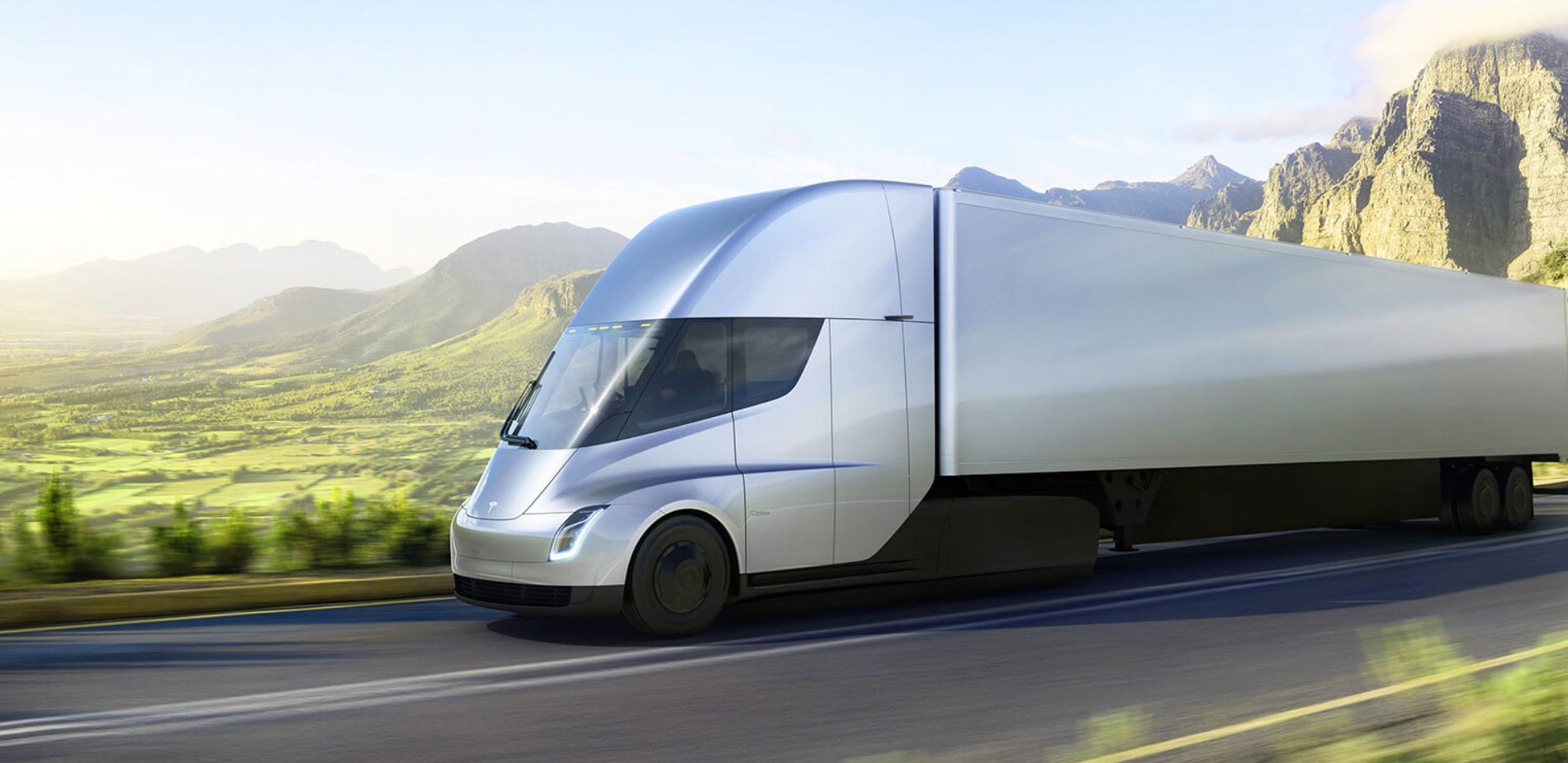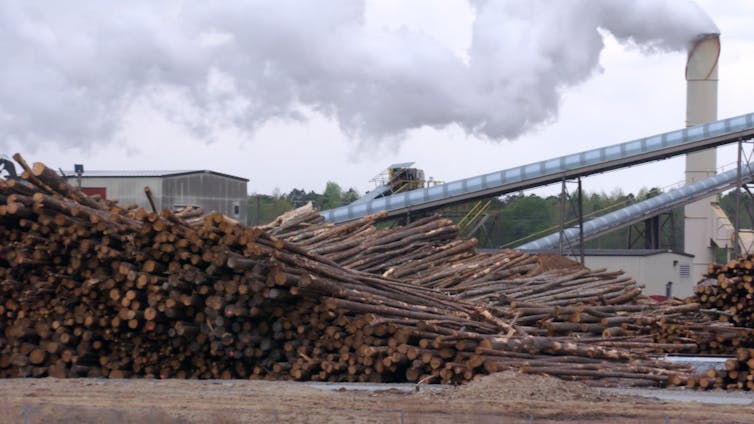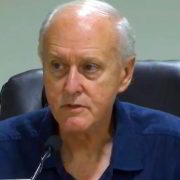Editorial – Hawaii County’s Energy Future
Historically, Hawaii County government has been mostly absent on the subject of energy, leaving such matters to HECO (HELCO) and to state’s regulators and legislators. Most of the island’s mayors have historically had other agenda priorities that generally do not include energy.
An exception to this policy path came when the island’s former mayor Billy Kenoi (2008-16) was pushing Waste-To-Energy (WTE) as the County’s salvation and solution to an overflowing Hilo waste landfill. A decade ago, burning trash for energy (WTE) seemed to some as the perfect answer towards addressing two of the County’s major (and ongoing) problems; an ever increasing volume of consumer waste, and the high cost of imported energy required to fuel the island’s electrical grid – something the County is very familiar with as HECO’s largest island customer. The WTE idea certainly had merit, but its critics included residents who had unanswered questions as to public costs and the certain environmental / climate impacts associated with burning waste for energy — questions that continue to dog WTE technologies to this day.
Is Hydrogen in Hawaii’s Future?
Fast forward to 2021, Mayor Mitch Roth’s administration is on a path back to the future.
Roth is following an energy strategy which gained national visibility during the Obama administration’s 2011 “all-in alternative energy policy”. Roth’s Deputy Managing Director Bobby Command put it this way …”the County of Hawaii supports a diverse portfolio of alternative energy producers”. It turns out, a “diverse portfolio of alternative energy producers” in this “all in” are welcome strategy is pointed towards two basic outcomes: 1) They are not based on fossil fuels, and 2) hydrogen production could be their end product.
When it comes to hydrogen as a transportation fuel and substitute for fossil fuels, and more specifically an alterative to battery electric vehicles, hydrogen is at a disadvantage in some fundamental terms facing questions of energy efficiency, costs, complexity, scaling, and the absence of a fueling infrastructure. Questions which continue to plague hydrogen’s technological advancement as a fuel for the general population of transportation users.
Then there are the risk factors. The funding of hydrogen projects, be it public or private sector investments, and especially pitting hydrogen vehicles against BEVs, the clear advantages are with BEV’s which have already demonstrated proven market competitiveness, and are being driven by rapid technological and commercial advancements in battery electric vehicles (BEVs), best typified by Tesla Motors – the winner; and Toyota, the loser.

Germany has long been a leader in hydrogen fueled vehicle research
In fact, BMW has been operating a test fleet of 50 H2 fuel vehicles for over 10 years. BMW’s conclusion matches other studies primarily focused on passenger car vehicles powered by hydrogen:
- Prof. Maximilian Fichtner, Dep. Director of the Helmholtz Institute Ulm for Electrochemical Energy Storage and designated expert in hydrogen research, summed things up this way: “hydrogen has very poor energy efficiency well-to-wheel” and these basic facts favor battery-powered electric cars are “on an order of magnitude more efficient”.
- Prof. Fichtner continues: “I’m not against hydrogen as an energy storage medium at all. We just should make use of it where it makes sense – and that’s not in the car, but in the stationary area.”
- Hydrogen fuel cell e-cars so have some advantages over BEV’s (range, fast refueling, no heavy battery on board), but they also have one decisive disadvantage: efficiency and cost. “No sustainable economy can afford to use twice as much renewable energy to drive fuel cell cars instead of battery-powered vehicles”, Prof. Fichtner .
We agree with Prof. Fichtner, hydrogen (H2) holds great promise in renewable energy-powered grid storage applications. Although the jury is still out on the potential use of H2 as a fuel for large commercial trucks and buses over long distances (as well as heavy duty construction equipment). The promise of H2 as a replacement fuel in these transportation applications (and even as a possible fuel replacement for commercial aircraft) is at such a nascent stage of development and deployment it’s difficult to image a County fleet of vehicles all running on H2 (cost effectively) by 2045.
H2’s promise:
 Widespread adoption of hydrogen for large vehicle commercial transportation applications is far from certain, but H2 does hold some advantages over BEV’s in the form of large truck and buses.
Widespread adoption of hydrogen for large vehicle commercial transportation applications is far from certain, but H2 does hold some advantages over BEV’s in the form of large truck and buses.
There are inherent BEV issues of battery weight, range and longer refueling times, which only increase with size and capacity, making batteries potentially less competitive within the commercial large vehicle sector.
Yet, companies such Tesla and NIO have already proven (at the beta test level) that BEV’s can compete with large fossil fuel commercial trucks and with their H2 counterparts (picture of Tesla’s Semi BEV commercial long haul vehicle). BEV’s hold the advantage of being further along in technology development, fueling infrastructure, and commercial deployment over H2 prototypes.
What do consumers gain from H2 as a clean fuel alterative?
What is clear is that hydrogen-powered e-cars will increasingly become more expensive to drive than battery-powered vehicles, not only in terms of purchase, but also in terms of operation and overall ownership costs.

Climate Priorities and Energy Meet
A decade ago, Climate Change was as big an issue as it is today. The difference, we are well beyond theory and now into the full on consequences of global warming, driven by an urgent need for fundamental corrections in the dirty energy matrix now governing our global economy.
Hawaii’s once far away statewide 2045 clean energy goal for transitioning the state off imported oil is now 20 years closer to that deadline. It’s increasingly obvious to lawmakers and government administrators, and I would add the general public, that much more needs to be accomplished in a statewide transition to a clean energy economy. Hawaii County, like it’s sister island county’s have produce noble proclamations towards addressing climate change and a transition to “sustainability”, but words lose their meaning without the necessary actions to back them up – and climate clock continues its relentless countdown.
Mayor Roth, and a supportive County Council, should be applauded for their efforts in working towards enabling this great transition to clean and sustainable energy. But in such a great transition involving social, economic, and environmental changes of this magnitude, greater public scrutiny and involvement is required. Ultimately, taxpayers and ratepayers will be footing the bill for decisions and policies enacted today that will have far reaching effects on the island many of us call home.
Biomass or Biomess
The County has a history of tacit support of biomass/biofuel projects in the name of clean energy and/or advancing agricultural, yet neither have proven to be the case. This appears to continue to this day in Roth administration’s approach to so-called energy alternatives.
Hu Honua, and other non-fossil fuel combustion energy generation technologies, without much due diligence on the State and County’s part, are following a playbook from more than decade ago embodied in the state’s far reaching 2045 RPS plan – a plan to get-off the state’s fossil fuel dependency. which translated into a blank check for emerging and unproven biomass technologies lacking any pollution prohibitions.
Case in point, Hawaii Island’s Hu Honua’s plans for a finite and unsustainable forever supply of island trees-to-chips to burn for power. Then there is the long and winding intra-island supply chain road, marked by diesel pollution and wear and tear to be considered. The infrastructure and environmental consequences of HuHonua don’t stop there, with island deforestation coupled to air and water pollution powerplant byproducts as part of the price for biomass which is not factored into the electricity ratepayers pay to HECO, but are added into their County and State taxes. In Hu Honua’s case, the power funded by ratepayers is also at unjustifiable energy rates, twice (2x) the cost compared to solar-wind-storage alternatives which further offer a track record of delivering power with greater energy reliability and security, but with the essential benefits of zero pollution (emissions) for delivering truly clean energy to ratepayers.
In short, Solar, Wind, Battery and/or Hydro Storage couple to advanced energy management and control systems, deliver to the public, the County, the state, and of course HECO non-polluting energy sources competitive to all other alternatives presently under consideration and supported by the Mayor.
The scientists who study climate change, the global carbon cycle and forest ecology tend to reject the notion of biomass is anything close to carbon neutrality. Those concerns extend into a general opposition to forest biomass because it contributes to climate change while disrupting important ecosystems and the biodiversity they support. They also object to this source of energy because burning biomass (trees into pellets as with Hu Honua powerplant plan) produces pollutants that endanger the public health.
Hawaii Island’s Agricultural and H2 Energy Plans – a marriage made in heaven?
 HuHonua is not the only example of where agricultural (deforestation) and energy form a nexus in past and present County policies. Hawaii County, like the rest of the state struggles with so-called invasive species (as referenced below in the Robert Command email), and ironically, are proving to be more climate-tolerant than so-called native species.
HuHonua is not the only example of where agricultural (deforestation) and energy form a nexus in past and present County policies. Hawaii County, like the rest of the state struggles with so-called invasive species (as referenced below in the Robert Command email), and ironically, are proving to be more climate-tolerant than so-called native species.

Considering a majestic Hawaiian eucalyptus tree described below as “horrible“, or an official County endorsement of Hu Honua after years litigation and PUC objections into Hu Honua power proposals, all of which demonstrate the present weakness in the Mayor’s energy plans — in short, a complete absence of due diligence into environmental, social, economic, and public interest consequences of an energy policy made in a vacuum of much needed public oversight and accountability.
Bobby Command, Deputy Managing Director, Hawaii County see things differently. “As we rid our island of horrible invasive species such as eucalyptus, albizia and ironwood, we create carbon sinks as we replace them with indigenous and endemic species such as koa and sandalwood. When no longer economically viable, energy from biomass will be phased out and morphed into technologies such as waste-to-energy.”
All of these technologies, when coupled with the production and use of clean burning hydrogen, will focus us on our goal, which is 100-percent alternative energy production with a sustainable net-negative carbon footprint.
The truth is, the current County administration is building a case for what they see as an inexhaustible fuel source based on its combustion and polluting byproducts to generate hydrogen. This is little better than big oil’s life-intending business strategy to promote hydrogen fuel, that is, so long as hydrogen is produced from a base of fossil fuel sources.
Questions the County needs to answer and communicate to the public:
- Why burn source materials that pollute the climate and our island environment to replace our fossil fuel dependencies?
- Why spend more to trade-off of one dirty energy replacement for another (Hu Honua), when cost effective and clean pollution-free energy alternatives exist today?
- Where is the true cost, energy efficiency comparison, and supply-chain risk analysis by this administration on which H2 assumptions have been formed, and in developing a transformative energy policy for Hawaii County?
Hawaii County’s energy assumptions also raises more questions, than provides answers:
- Should Hawaii County, or the state for that matter, invest time, resources, and money into nascent energy technologies with taxpayers dollars?
- Who are the outside forces driving the Mayor’s present H2 energy agenda?
- It is true that Blue Planet’s impressive H2 research facility at their Puu Waawaa Ranch has been influencing the County’s current energy policy and a roll-out strategy for H2 on Hawaii Island?
- Is it true Toyota has, for an undisclosed fleet price, offered H2 fuel Mirai sedans to the County? It’s public knowledge that Toyota has been desperately looking for a high visibility H2 vehicle partner to assist the company in validating its highly criticized broken business case for favoring and building H2 vehicles over BEV’s.
It is easily argued that it is in the public interest that the County Council members should look into what the Mayor and his staff are planning and question the policy assumptions outlined in Robert Command’s November 15th email (below).
———- Forwarded message ———-
From: Command, Robert H <RobertH.Command@hawaiicounty.gov>
Date: Monday, November 15, 2021
The County of Hawaii supports a diverse portfolio of alternative energy producers, including Hu Honua. As we rid our island of horrible invasive species such as eucalyptus, albizia and ironwood, we create carbon sinks as we replace them with indigenous and endemic species such as koa and sandalwood. When no longer economically viable, energy from biomass will be phased out and morphed into technologies such as waste-to-energy. We also lower the risk of unintended consequences of cultivating these detrimental invasive species, which choke out native species and promote erosion.
Energy price fluctuations are naturally constrained by supply-and-demand economics when we have a diverse portfolio, including solar, geothermal, wind, hydroelectric and even OTEC. Uptick in prices, when spread over many producers, will be, for the most part, negligible. As we lower the demand for energy, prices are further depressed. One has only to remember the $2.43 per gallon for gasoline during the depths of the pandemic as an example of the effectiveness of laissez-faire economics.
All of these technologies, when coupled with the production and use of clean burning hydrogen, will focus us on our goal, which is 100-percent alternative energy production with a sustainable net-negative carbon footprint.
Mahalo
Bobby Command
Deputy Managing Director
County of Hawaii




What a fantastic effort to bring Hawaii Island into the forefront of zero emissions….John
Excellent job! .John
Good questions Bill. Where is the power plant picture from…here?
The short answer is with HECO, not Mayor Roth’s administration.
If the direction the utility is now taking in Oahu in their RFP search for replacement energy alternatives prior to the sunset of the AES coal-fired power plant is any indication – HECO’s stated plans do not bode well for a future of low cost, clean and zero emissions energy replacement options available today to the utility, including for Hawaii (Island) and Maui counties.
HECO’s eligible energy replacement technologies for AES would include “projects fueled by biogas, biomass, biofuels, and hydrogen produced from renewable energy sources, as well as waste-to-energy and geothermal projects.”
The only thing standing between HECO and more of the same bad power generation decisions is the state’s PUC. After the Hu Honua mess, the PUC appears determined to ensure full due diligence is performed and the public interest is upheld – this time around, including “completing a full life-cycle greenhouse gas emissions analysis”.
For more information on this development, I recommend visiting: http://www.ililani.media/2021/11/heco-proposed-oahu-rfp-for-bioenergy.html